Modules
The 12 modules provide a good overview of the elements of UX design. This includes all areas that support the establishment of the UX Design process and lead to user-centric solutions.
General Modules
Introduction to the UX design process
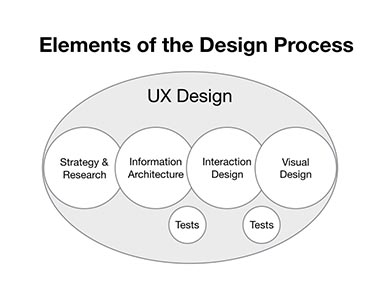
Introduction to the UX design process
This Module is aimed at people who want to know what the components of the UX design process are. It provides an overview of the different topics in UX Research, Strategy and Design and clarifies the most important items in the UX vocabulary. This is a great opportunity to eliminate misunderstandings and to close gaps in the participants’ knowledge. "Bringing UX design into the company

Bringing UX design into the company
In this module we look at what it takes to establish UX processes and what the benefits are. The aim is also to raise awareness for the challenges ahead. We talk about how long it takes to establish UX processes in the organization and the effort involved. Ideally, the module can be prepared to reflect both the current and desired situation of your organization or department. This helps the participants to relate to the topic."Testing: Verifying assumptions

Testing: Verifying assumptions
Usability tests allow to continuously and sustainably check your concepts and thus increase competitiveness and user satisfaction. This module is about how to set up and perform a usability test in such a way that you get valid results. It shows how to interpret the results and how to come up with suggestions that improve the user experience.From strategy to implementation
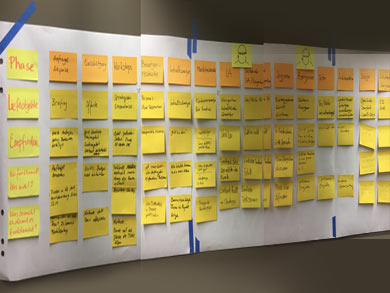
From strategy to implementation
This module looks at all the elements of the UX Design process from an organizational perspective. From the first customer contact to research, design and implementation. We will look at typical project setups and scenarios, depending on project type, size and complexity. This module has great potential to be tailored explicitly to your team: it is the perfect opportunity to assess your own process and understand what can be improved. "Modules for Strategists
Strategic goals and users

Strategic goals and users
At the beginning of every successful project there is a carefully devised strategy. An important part of it is to find out what the customers want, who their users are and what these users need. This module explains how to develop a user-centric strategy.User needs and assets

User needs and assets
The foundation of good interaction designs is the knowledge of user needs. This module shows how needs are evaluated, how the resulting scope of a project is estimated and how user tasks are prioritized.Content strategy

Content strategy
This module addresses the entire lifecycle of content. Content Strategy not only deals with content in the narrower sense, but also focuses on how content is structured and prioritised, how it is created and what decisions are behind it.Information architecture
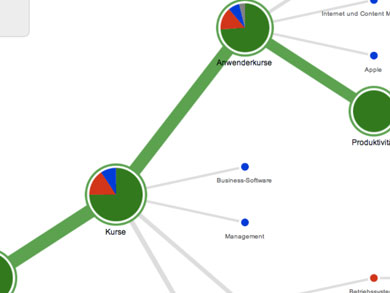
Information architecture
Information is only useful if it can be found. A sound information architecture ensures that information is organized according to users' expectations. This module covers techniques for creating user-friendly navigation and information structures.Modules for Designers
Principles of interaction: why we interact

Principles of interaction: why we interact
Ease of use is not a matter of chance. Good usability follows clear rules and is consistently oriented towards human perception. This module conveys what it takes for interactions to happen and for them to be user-friendly.Designing interactions
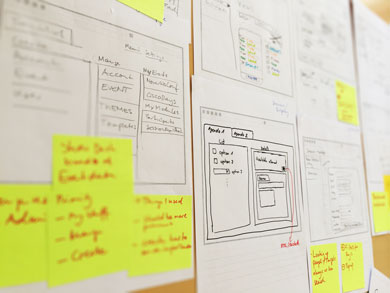
Designing interactions
Interactions are not limited to filling out form fields or pressing buttons. They often are complex processes with animations, feedback and interface changes that need to be carefully planned and designed. This module deals with all possible forms of interactions and how they work in detail.Design for Mobile and Touch

Design for Mobile and Touch
Designing for mobile devices and touch interfaces presents designers with new challenges. In this module, we explore the particularities of mobile design and talk about topics like Responsive Design or Mobile First and how these concepts have had a great influence on how digital products are built today.Machine Learning for Designers
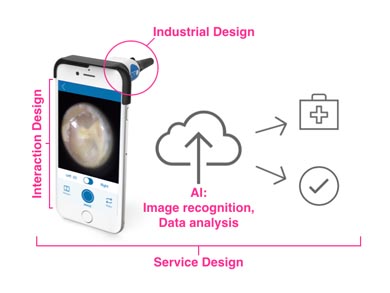
Machine Learning for Designers
Artificial intelligence is more and more becoming the core of digital products. Designing for products based on AI requires designers to know about Machine Learning. This module is an introduction to the field of Machine Learning. It looks at its fundamental principles using practical examples. It showcases applications of the different types of Machine Learning. These range from text categorization to image recognition and speech analysis. The goal is to show what is important and why - not only for designers but for web-professionals and beyond."
Contact us for a free quote.